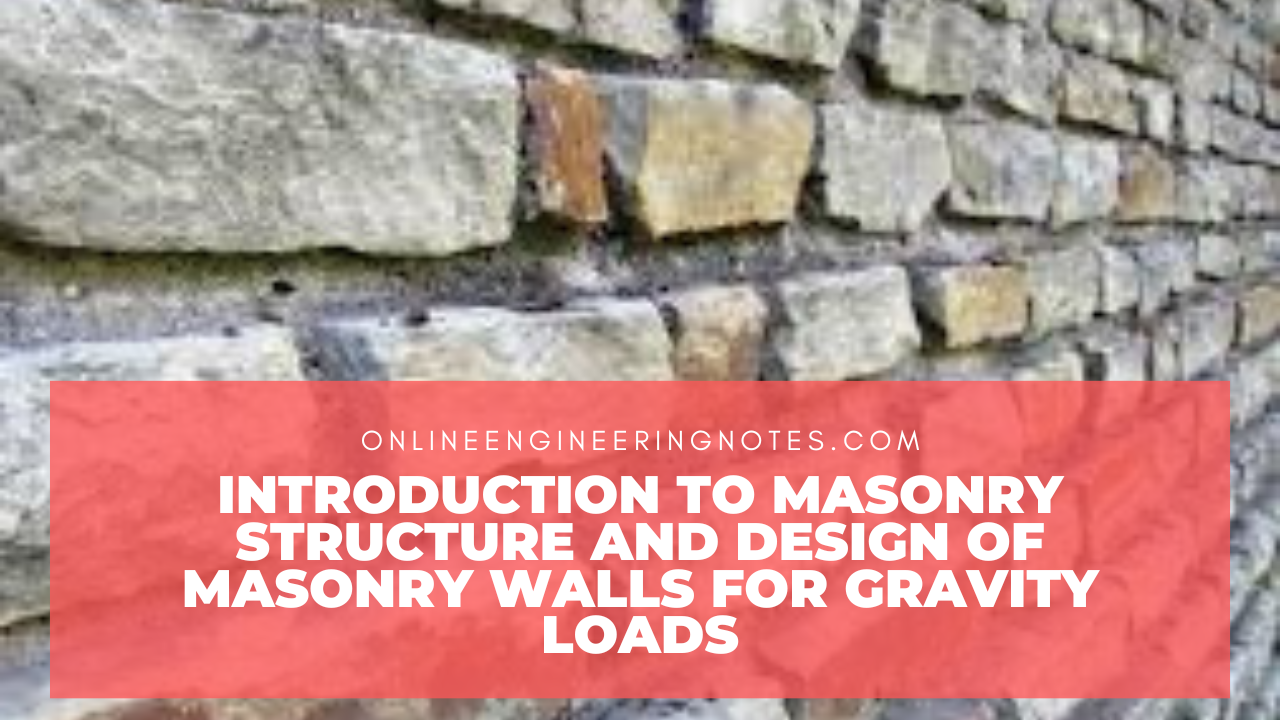1.1 Composition of masonry and different types masonry unit
- A masonry structure is one made by joining (bonding) multiple number of building blocks like brick, stone, block etc. usually with cohesive material called mortar. The mortar may be mud mortar, lime mortar, cement mortar etc.
Merits:
- They are non – combustible so improves fine protective of building.
- Environment friendly.
- Economic.
- Use of locally available material.
- Most of the wall does not require painting.
Demerits:
- Extreme weather causes degradation of masonry wall.
- Low tensile strength.
- Problem in large opening.
- Due to heavy weight large foundation is required. Also cracking and settlement may occur.
Types of masonry unit:
1. Brick masonry:
- Highly durable form of construction.
- Build by placing bricks in mortar in a systematic manner to construct solid mass which can withstand external load.
2. Stone masonry:
- Use of stone and mortar.
- Used for building foundation, floor and retaining wall etc.
3. Concrete block:
- Hollow building unit of concrete.
4. Glass block:
- Fixed together to form complete wall by several method.
5. AAC (Autoclaved aerated concrete) block:
- Light weight building block ensure better durability and improves sound and heat insulation.
Types of brick wall:
a. Stretcher bond:
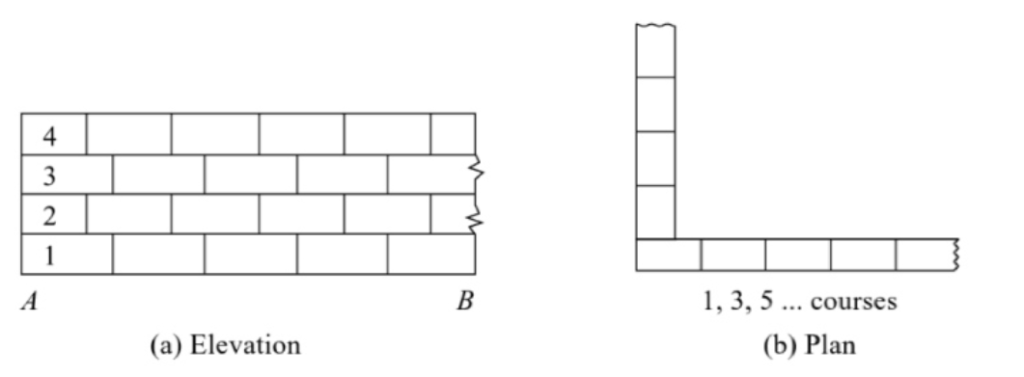
- Formed when stretcher of bricks are laid along the face of wall.
- Used in partion wall.
b. Header bond:
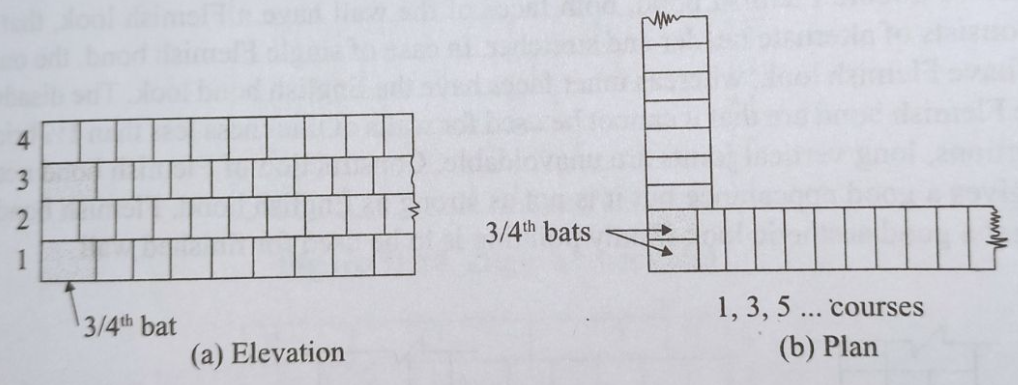
- Formed when head of bricks are laid along the face of wall.
- ¾ bat is provided in each alternative course in corner.
- Unsuitable for load bearing structure.
c. English bond:
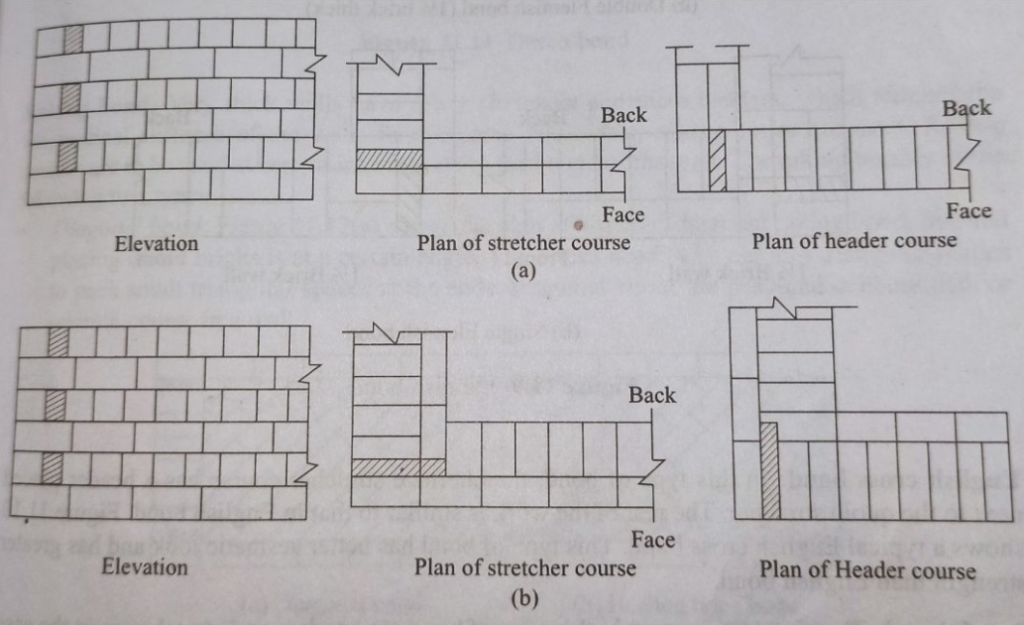
- Consists of alternative course of headers and stretchers.
- Queen closer after first header in each heading course.
d. Flemish bond:
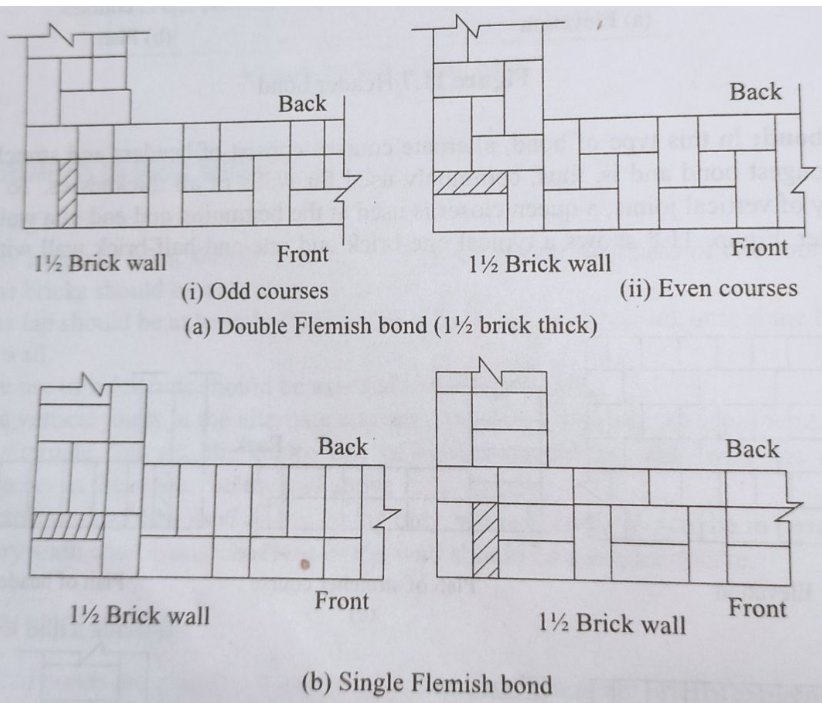
- Each course is comprised of alternative headers and stretchers.
- Every alternative course starts with header at corner.
e. Zigzag bond:
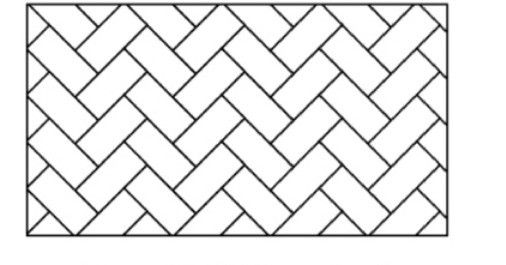
- Laid in zigzag fashion.
- Used in brick flooring.
1.2 Types of masonry structure
1. Load bearing and non – load bearing masonry.
Load bearing masonry:
- Oldest and mostly used technique.
- Every wall elements carries load to the foundation which is transferred to the ground.
- Mainly used to construct residential building.
Merits:
- High fire resistant.
- Fabrication is not required.
- Aesthetically attractive.
Demerits:
- Performs bad during earthquake.
- More manpower required during construction.
- Construction is slow.
Types of load bearing masonry:
- Precast concrete wall
- Retaining wall
- Brick wall
- Stone wall
Non – load bearing masonry:
- Walls carry only their own weight.
- Used for partion wall.
- Built lighter to reduce the dead load of structure.
- Can easily be removed without endangering the safety of the building.
Types of non – load bearing masonry:
- Hollow concrete brick wall
- Façade brick wall
- Hollow brick wall
- Brick wall
2. Reinforced and unreinforced masonry
Reinforced masonry:
- A construction system where steel bars, reinforced concrete bands, bamboo, timber etc are embedded in the mortar or placed in the holes and filled with concrete.
- Increases tensile as well as compressive strength.
Classification:
a. Reinforced hollow unit masonry:
- Vertical reinforcement is inserted inside brick or block and filled with concrete or grout.
b. Reinforced grouted cavity masonry:
- Consist of two leaves of masonry units separated by the cavity into which the vertical and horizontal reinforcement is placed and grouted with either concrete infill or grout.
c. Reinforced packet type wall:
- Pockets containing vertical bars are filled with grout.
Unreinforced masonry:
- Reinforcing bars is not placed.
- Likely to be damaged during earthquake.
- Mortar holding masonry is weak.
1.3 Properties and strength of cement mortar
- Cement mortar is a homogenous mixture of sand, cement and water in suitable proportion.
Properties:
- Should be easily workable.
- Should be durable.
- Should not affect durability of other materials.
- Should retain mixed water for longer period of time.
- Should have sufficient strength to handle the load of structure.
Strength:
- Compressive strength of cement mortar after curing 28 days is 33 N/mm2 to 53 N/mm2.
1.4 Introduction to codal provision (NBC 109) and guideline (NBC 202)
- In the past there was no code for designing masonry construction and at that time design was based on thumb rule. The thickness of wall were found to be very big and uneconomical.
Code design of masonry are:
- IS 1905: Code for practice for structural use of unreinforced masonry.
- NBC 202:2015: Guideline on load bearing masonry.
- NBC 109:1994: Code for use of unreinforced masonry.
1.5 Bonding elements in masonry
- Bonding is the systematic arrangement of bricks or other building units composing a wall or structure in such a way as to ensure stability and strength.
Types of bonding elements in masonry are:
a. Bond – stone:
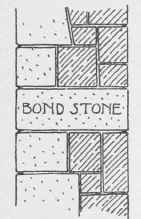
- Large stone which passes through a wall from one side to the other to lock the layers of the wall together and reinforce the structure.
b. Bands:
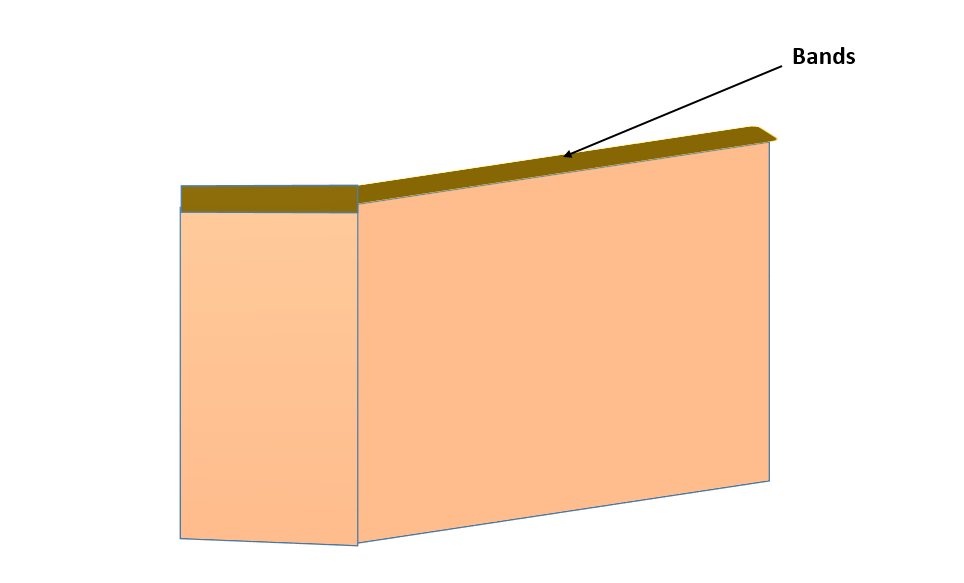
- Provided to hold a masonry building as a single unit by typing all the wall together.
c. Dowels:
- Provided to transfer load without restricting horizontal joint movement due to temperature and moisture expansion and contraction in the concrete slab.
References:
- Dayaratnam, P. Brick and reinforced brick structure.
- Neville, A.M. Properties of Concrete. England: Pearson Education Limited.
- Hendry, A.W., Sinha, B.P. & Davies, S.R. Design of Masonry Structure. London: E & FN Spon.

